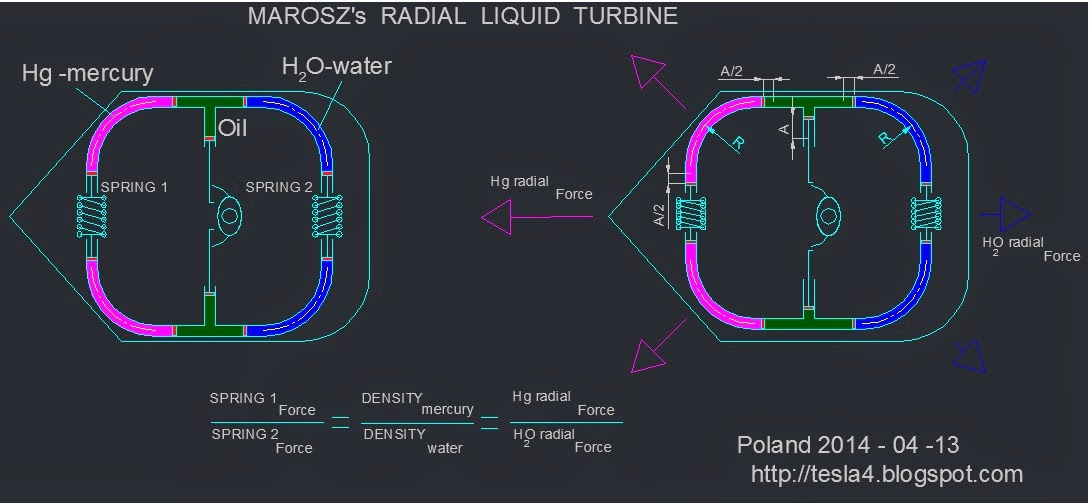
ok , in the above picture you posted.
the pump is providing the same force to the green fluid.
so the resultant force will be the same applied to the pistons that push the mercury and the pistons that push the water.
all the pistons are the same size so the mercury will move slower and will have a lower velocity than the water because
the mercury is heavier than the water.
what will happen is the pistons that move the water will stroke
further out than the pistons that move the mercury.
and there will not be any difference in the radial forces
you have depicted in the image.
always remember m X v = p
even when you are using hydraulics and a closed system you
must remember the moment of inertia of the fluids used.
the springs will need to be of different strengths in order
to compensate or to balance the fluid velocities of the
mercury and water.
you may even need to pressurize the area where the spring on
the water side is located.
if you can get it balanced out then you also have found
yet another method of reactionless propulsion.
theres no extra energy involved so its not free energy
and nobody who has previously found a method of reactionless
propulsion has a nobel prize for it or for pointing out
the inaccuracies of current scientific thought patterns
and beliefs because it would be those who hold onto the
inaccuracies and beliefs who would nominate you for the prize.
how many times have you ever experienced a scientist
voluntarily admit that he was in error and give praise
to those who found his error?




